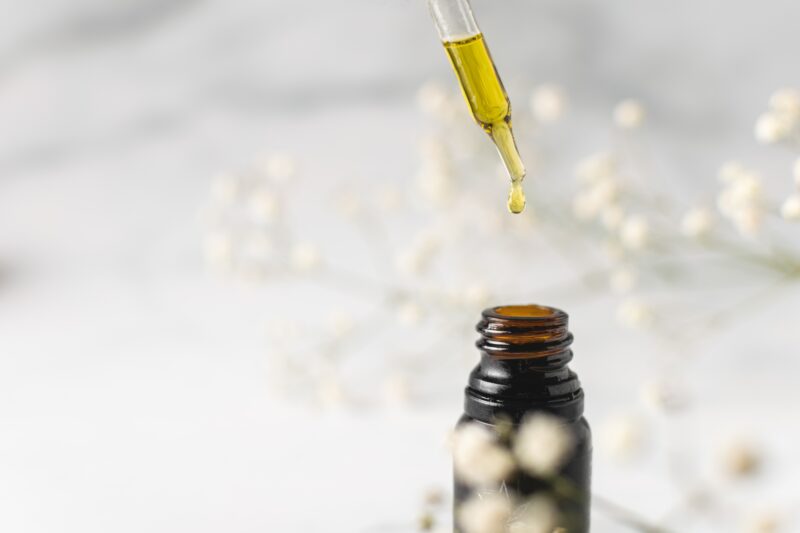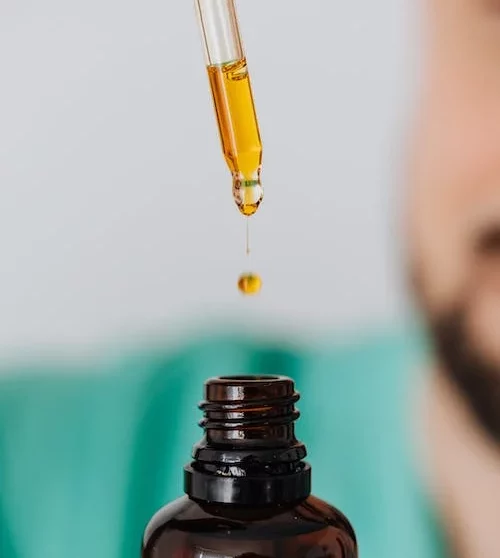What Is RSO Best For?

If you’ve recently begun medicating with cannabis, or even if you’ve used medical cannabis for some time, you may have heard of Rick Simpson Oil. Rick Simpson Oil, or RSO, is a form of THC that’s highly concentrated. It was created by retired Canadian engineer Rick Simpson who became a cannabis activist after he was diagnosed with cancer in 2003. Mr. Simpson used his RSO to treat his condition after doing some research into THC’s cancer-fighting potential. He tried using it medically and was amazed to see that RSO actually helped him fight his diagnosis.
RSO is very concentrated, and you only need a few drops of the oil (applied to the affected area) to help treat your ailment. RSO can also be taken orally and has been used in a variety of treatments.
Indica or Sativa?
RSO is made from Indica because of its high concentration of THC. The oil is made with Indica strains that have THC levels between 60% and 90%, and RSO always uses the full plant to provide the intense sedative effects people have become used to. RSO makes you feel relaxed and sleepy in addition to being curative.
Sleep is essential to the healing process, and the much-needed rest promoted by RSO can help those who are fighting serious medical conditions. RSO is promoted for people with heavy chronic pain and cancers because of its relaxation properties, which are also good for patients who have difficulty sleeping.
The Accessibility of RSO
Rick Simpson crafted his RSO not to make a profit, but to help people. He openly shared the process and encouraged people to make it themselves and benefit from the natural effects of cannabis. RSO is available and many medical cannabis dispensaries today, but is meant for medical and not recreational use because of its extreme concentration.
While RSO might sound similar to other cannabis extracts such as FECO, it’s not the same. Their basic difference is in the solvents, and how the two products separate cannabinoids and plant material. Full extract cannabis oil uses ethanol to extract the THC and CBD, and these extracts leave behind more cannabinoids because they are created at lower temperatures. RSO uses naphtha or alcohol in the extraction process, and the recipe calls for higher temperatures to fully evaporate the alcohol which also makes the plant lose some of its terpenes. While RSO’s process is different, it retains more of the full cannabis plant. RSO contains health-enhancing compounds such as chlorophyll.
How Should RSO Be Used?
RSO is harmless and non-addictive, meaning it can be used as a natural medication helpful in treating cancer, chronic pain, and other major illnesses. Cannabis is an effective anti-inflammatory, and as medicine can be used to bring down chronic inflammation that is associated with many diagnoses.

Rick Simpson Oil can be used to help treat a wide variety of conditions, including:
- Anxiety
- Depression
- Alzheimer’s
- Parkinson’s
- Dementia
- Rheumatoid Arthritis
- Asthma
- High cholesterol
- Insomnia
- High blood pressure
- Chronic Pain
- AIDS
Both RSO and FECO can be effective in treating some medical conditions because of the active plant compounds that are found naturally in cannabis. THC, CBD, and cannabinoids have been shown to help treat a variety of conditions, and many blends of cannabinoids can help patients experience a better life. At the least, RSO’s relaxing benefits can help those experiencing insomnia or chronic pain due to their illnesses.
How Much RSO Should You Take?
Rick Simpson established a particular treatment protocol for RSO for anyone with serious medical conditions. By taking 60 grams of RSO over a 90-day period, patients should see considerable changes in their illnesses.
RSO can cause an intense reaction and can be difficult for patients with low or non-existing cannabis tolerances. Mr. Simpson developed a dosing regimen that involves taking three doses of RSO per day, roughly 8 hours apart.
In the first week, you should take one drop roughly the size of a grain of rice. In weeks 2-5, increase the dosage up to 1 gram per day. In weeks 5-12, continue to up the dosage until the patient reaches a total of 60 grams.
New patients should start with smaller dosages and wait up to 90 minutes to assess the effects. As with any cannabis concentration, it can take some time to determine how it will affect any individual patient. Because of RSO’s high THC content, new patients might sleep a lot during the start of their treatment. Sleep is often essential to the healing process, which makes RSO an important implement for curing life-threatening illnesses.
How Much Does RSO Cost?
If you require RSO at the treatment level, it can become very expensive. Rick Simpson recommends making your own, though not everyone will have access to the amount of cannabis required to make 60 grams of RSO. Many patients will also not have the ability to make RSO themselves, which is why it’s becoming increasingly common to find RSO at dispensaries.
If you plan on purchasing RSO from a dispensary, there are a few things to consider. It’s important to have as much information about purchased RSO as possible, and your dispensary should have all this knowledge readily available. Ask them if their RSO is made from organic cannabis, what strains were used to make it, if it was made from the whole plant, which cannabinoid is dominant if it was cultivated from a reputable farmer, and if other patients have recommended this strain and concentration.
How To Take RSO
There are a few different ways to ingest RSO. It typically comes in a syringe without a needle, so that you can take it orally or topically. It can be taken as a tincture, concentrate, edible, and more.
Orally is the most common method for consuming RSO, as the THC will be at its most psychoactive. You can apply RSO topically to treat conditions such as skin cancer, by placing the drops on the affected areas. There are also RSO capsules and suppositories, which are the most bioavailable method of oil.
Some might ask if they can smoke RSO, but this is not very effective. RSO extracts all the components of the cannabis plant and includes fats, lipids, and chlorophyll. This means that the smoking experience will not be very suitable or enjoyable.
RSO Frequently Asked Questions
How long does RSO take to kick in?
Generally about 1-2 hours.
How long does a dose of RSO last?
A single dose of RSO lasts for up to 6 hours.
What is the best way to take my RSO?
Patients should take 3 doses a day, roughly 8 hours apart. Take morning, afternoon, and night before sleep.

